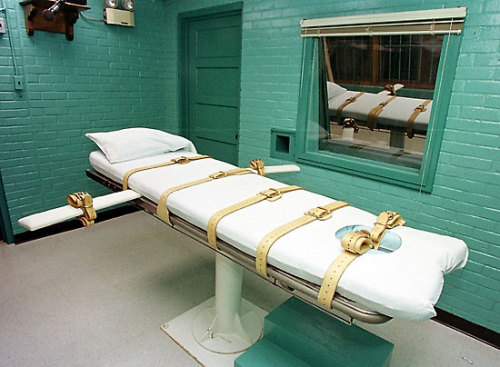The Lethal Injection
In the short time before an execution by lethal injection, the prisoner is prepared for his death. This can include a change of clothing, a last meal, and a shower. The prisoner is taken to the execution chamber and two IV tubes are inserted in to his arms; a saline solution is fed through the tubes. These tubes are then fed through the wall in to an anteroom from where the execution will be carried out. The anteroom contains direct telephone connections to officials who have the power to stay the execution. Once the IV tubes are connected, the curtains are drawn back so that witnesses may watch the execution, and the prisoner is allowed to make his last statement.
Unless a stay is given, the execution begins. There can be one or more executioners, and sometimes in the case of multiple executioners, the lethal dose is given by only one so that no one knows who delivered it. The executioners are shielded from the view of the prisoner and witnesses. The drugs can be delivered by a machine, but due to the fear of mechanical failure, most US states prefer to manually inject the drugs in to the IV. The drugs are then administered in the following order:
Sodium thiopental: This drug, also known as Pentathol is a barbiturate used as a surgical anesthetic. In surgery, a dose of up to 150mg is used; in execution, up to 5,000mg is used. This is a lethal dose. From this point on if the prisoner is still alive, he should feel nothing.
Pancuronium bromide: Also known as Pavulon, this is a muscle relaxant given in a strong enough dose to paralyse the diaphragm and lungs. This drug takes effect in 1-3 minutes. A normal medical dose is 40 – 100mcg per kilogram; the dose delivered in an execution is up to 100mg.
Potassium chloride: This is a toxic agent which induces cardiac arrest. Not all states use this as the first two drugs are sufficient to bring about death.
Saline solution is used to flush the IV between each dose. Within a minute of two after the final dose is given, a doctor declares the prisoner dead. The body is then sent to the coroner for verification and sometimes an autopsy and is released to the family for burial or is buried by the state.

No comments:
Post a Comment